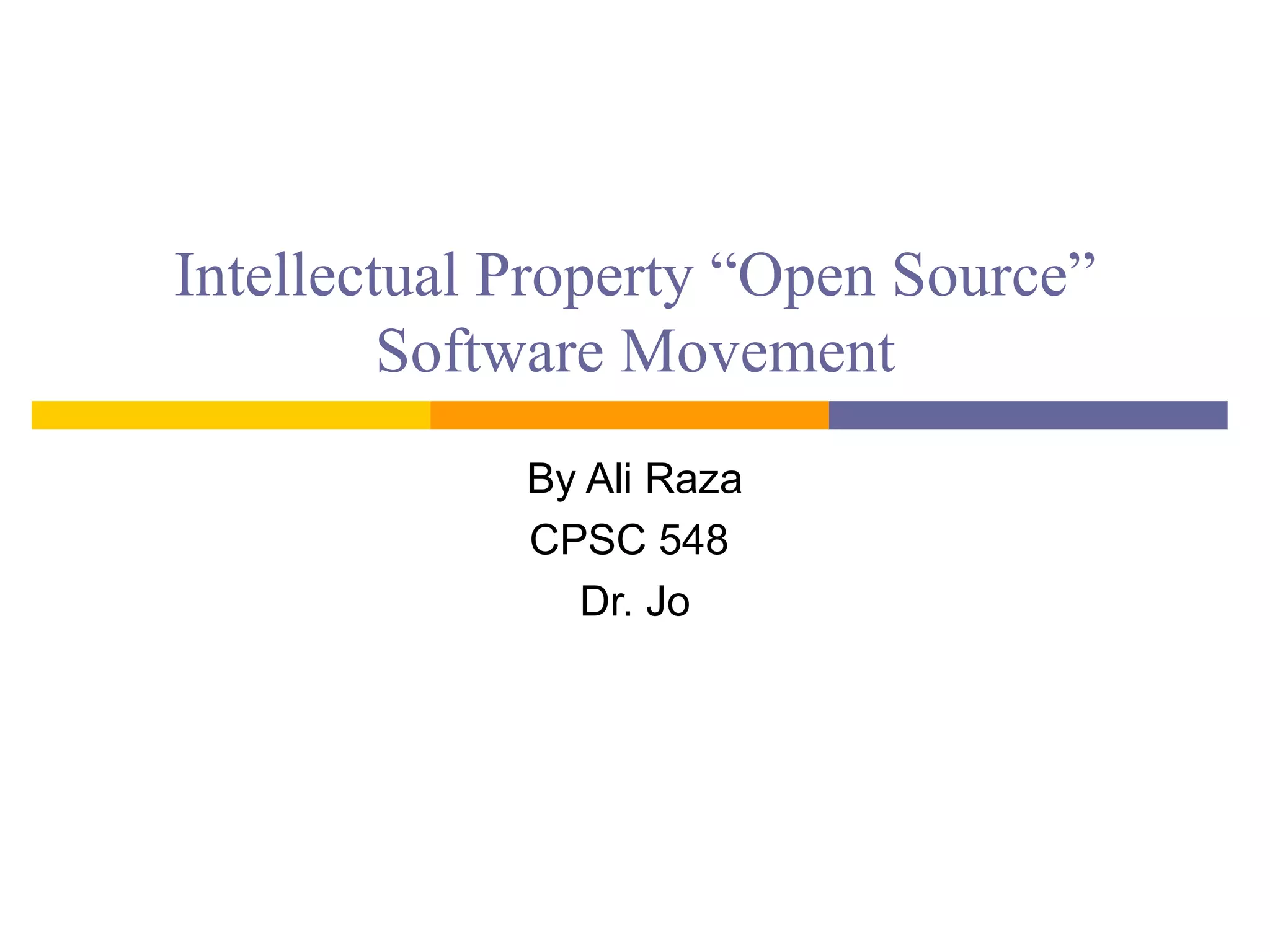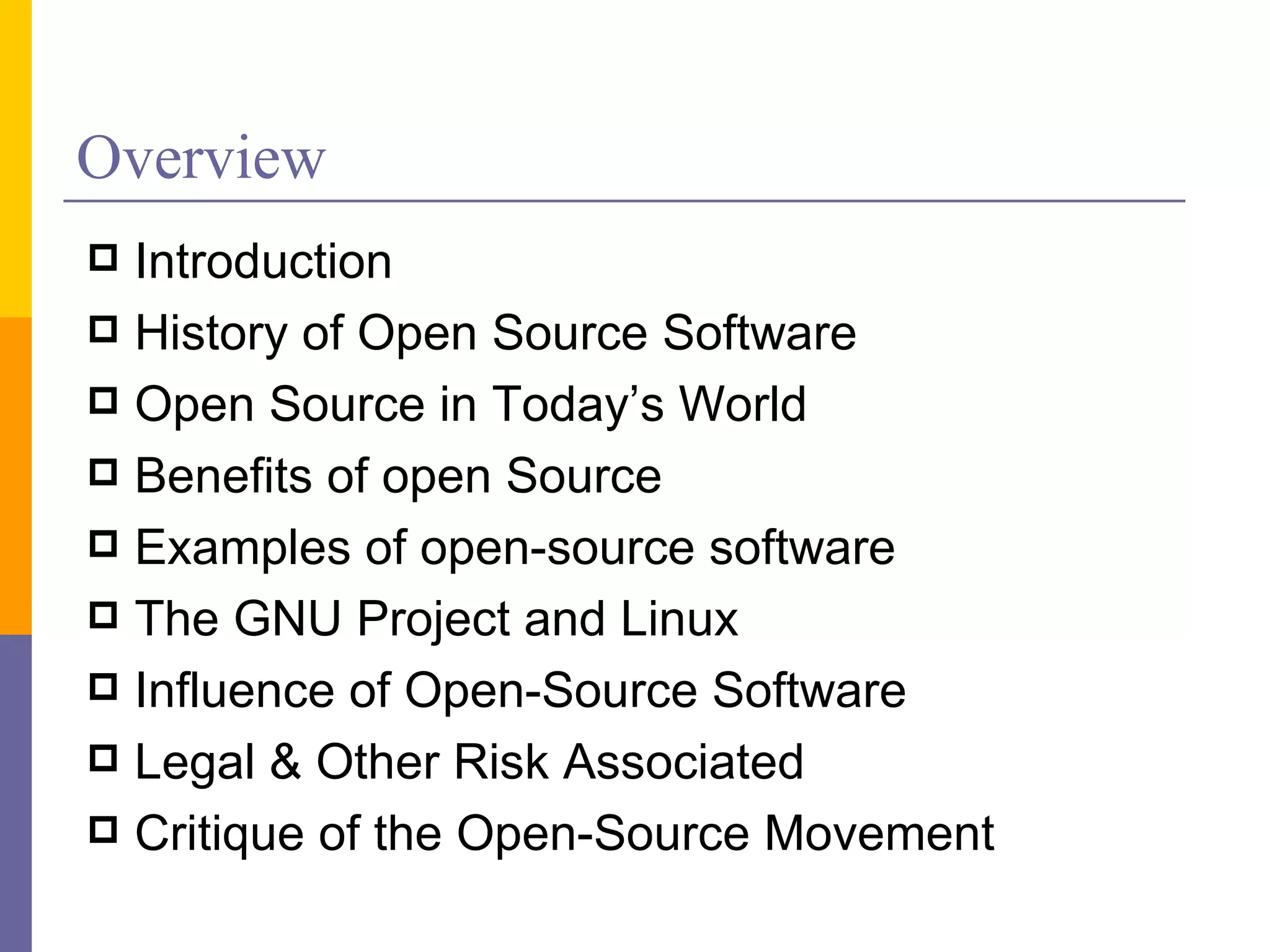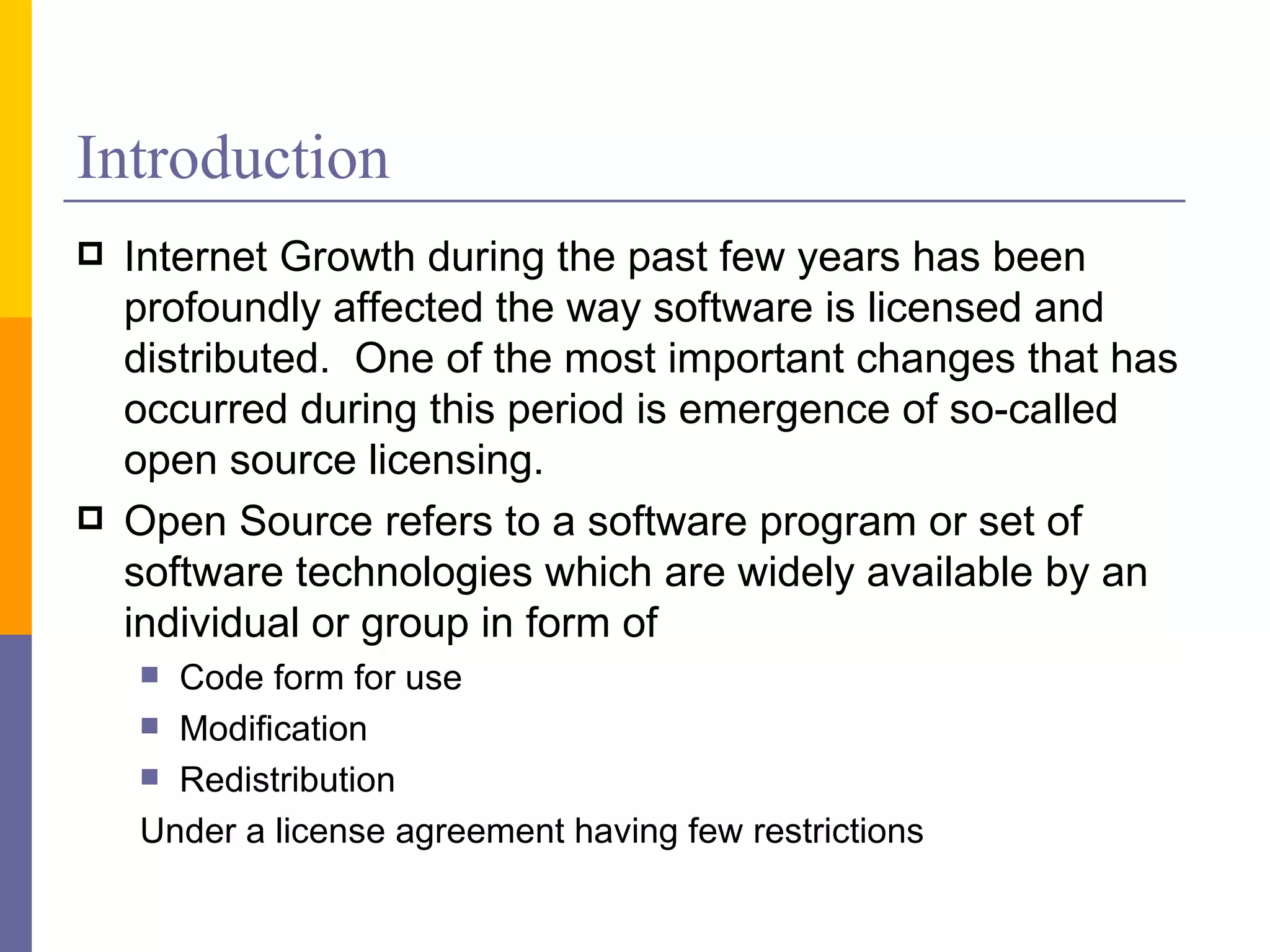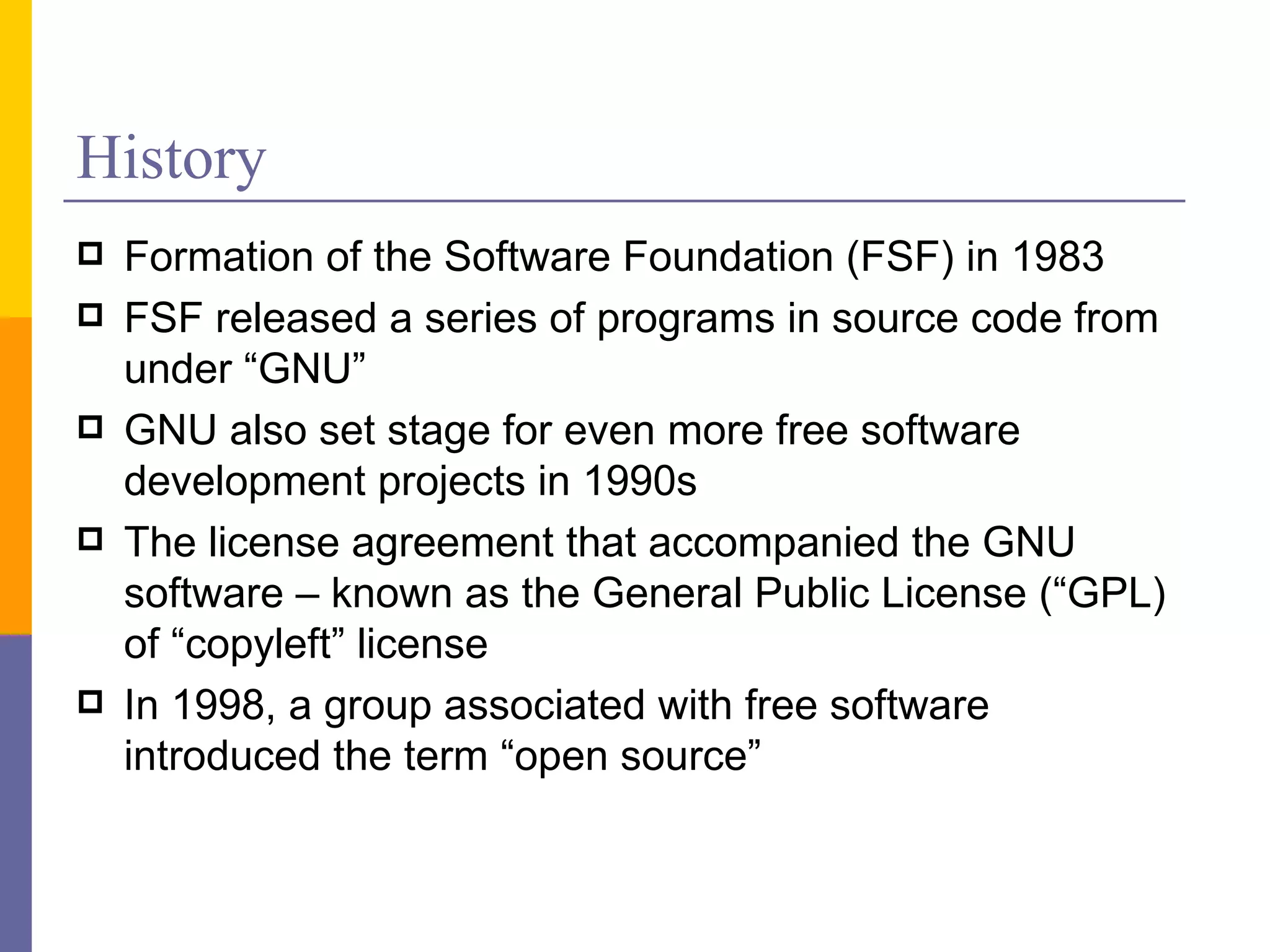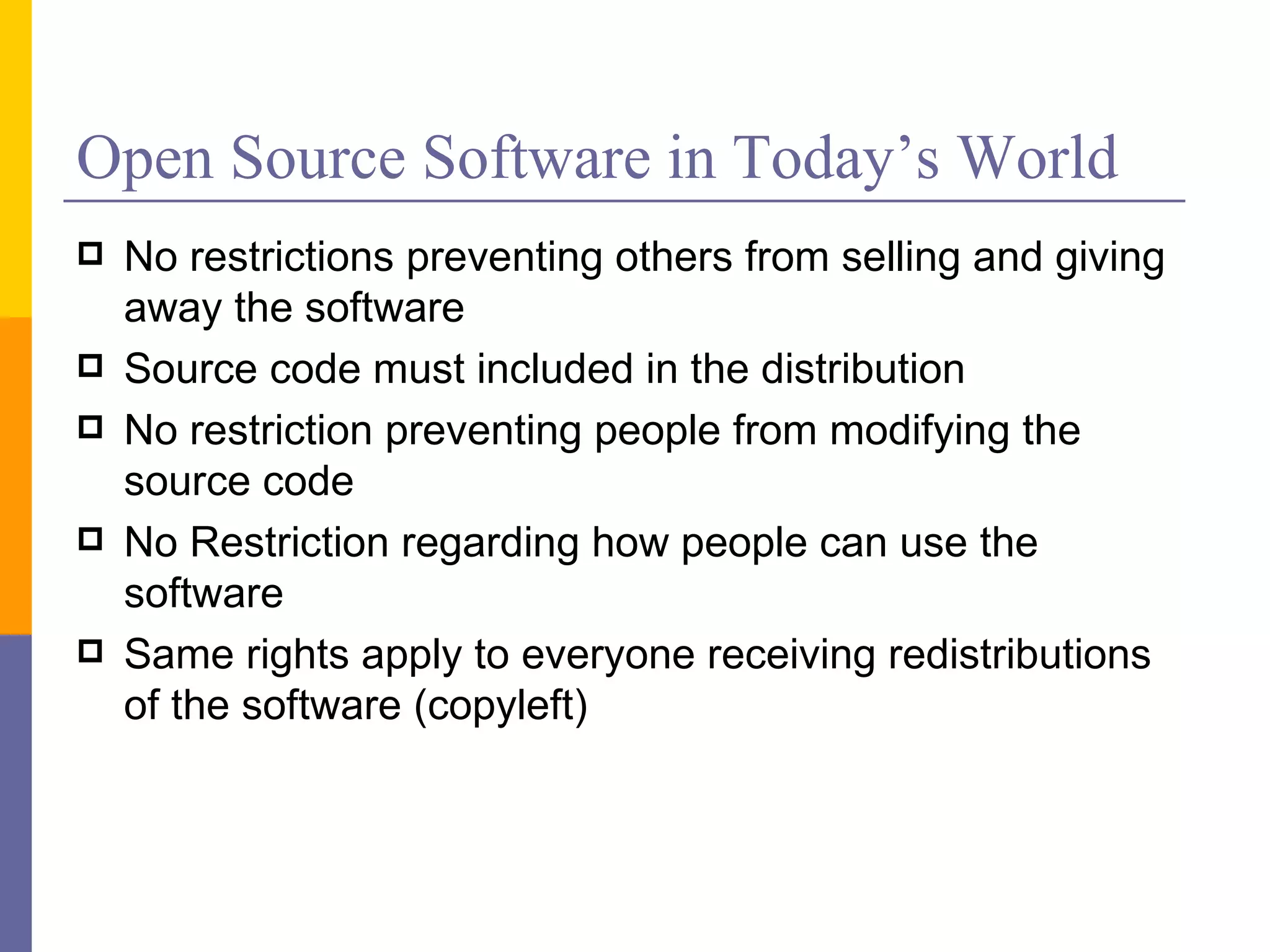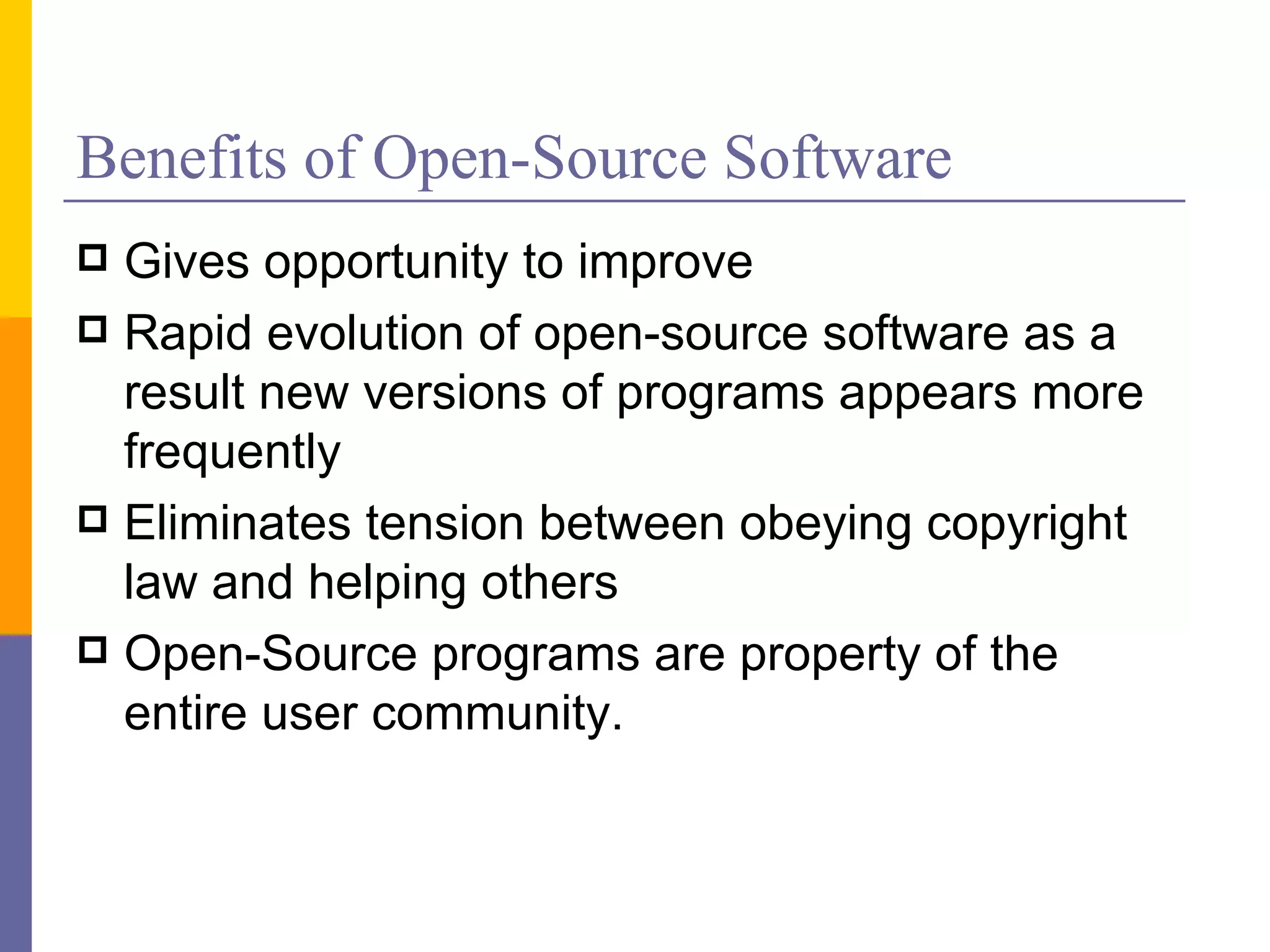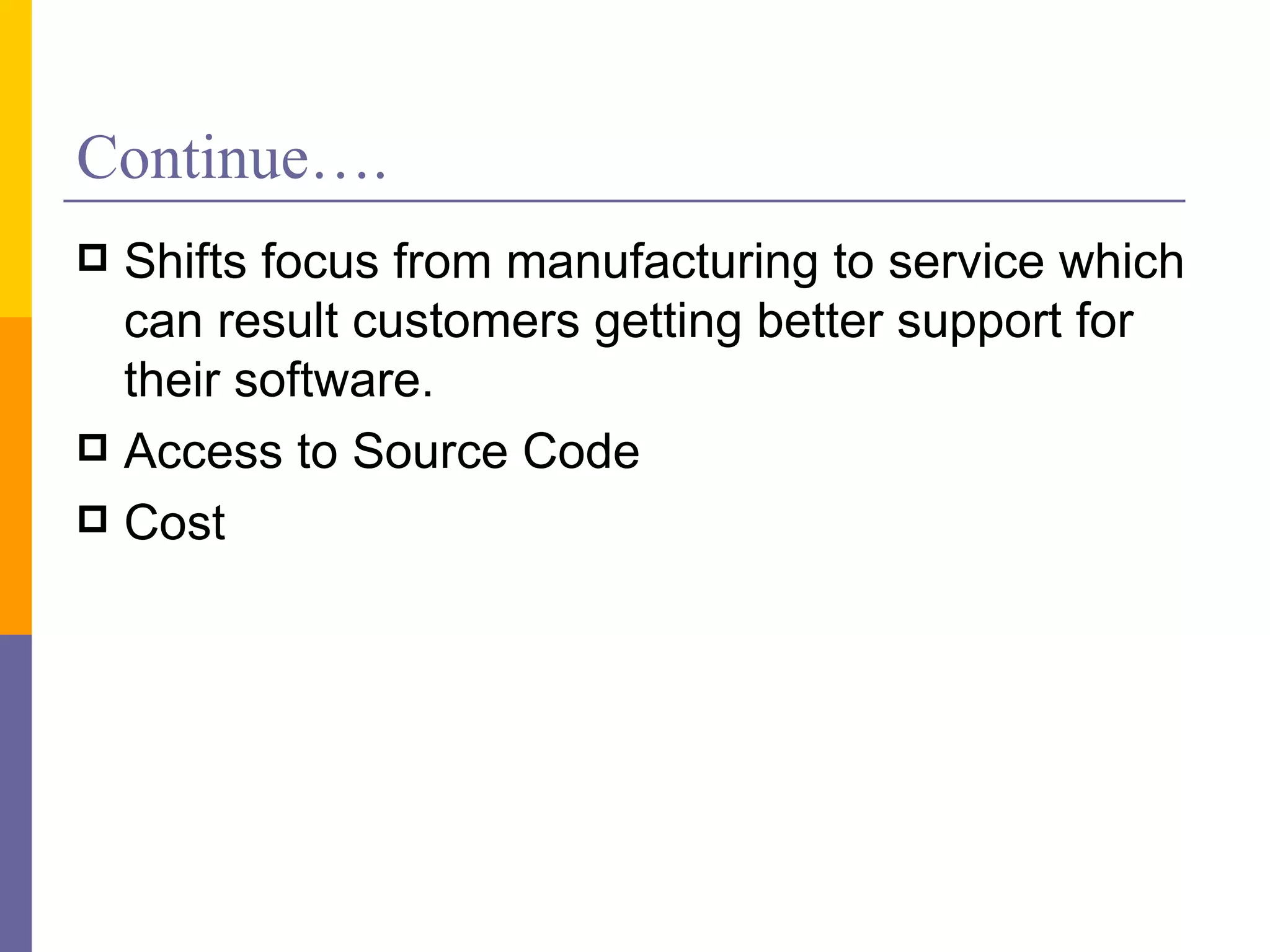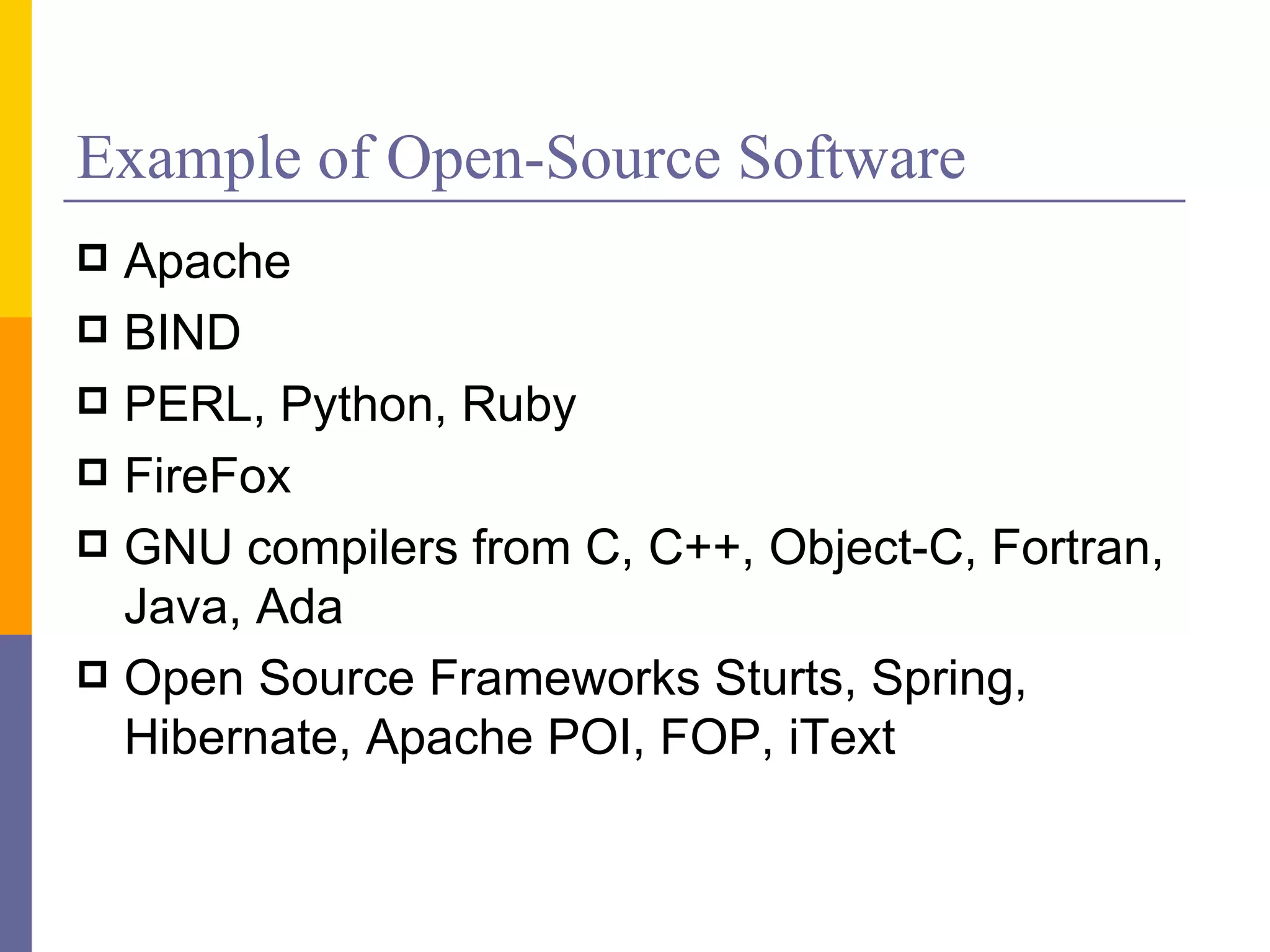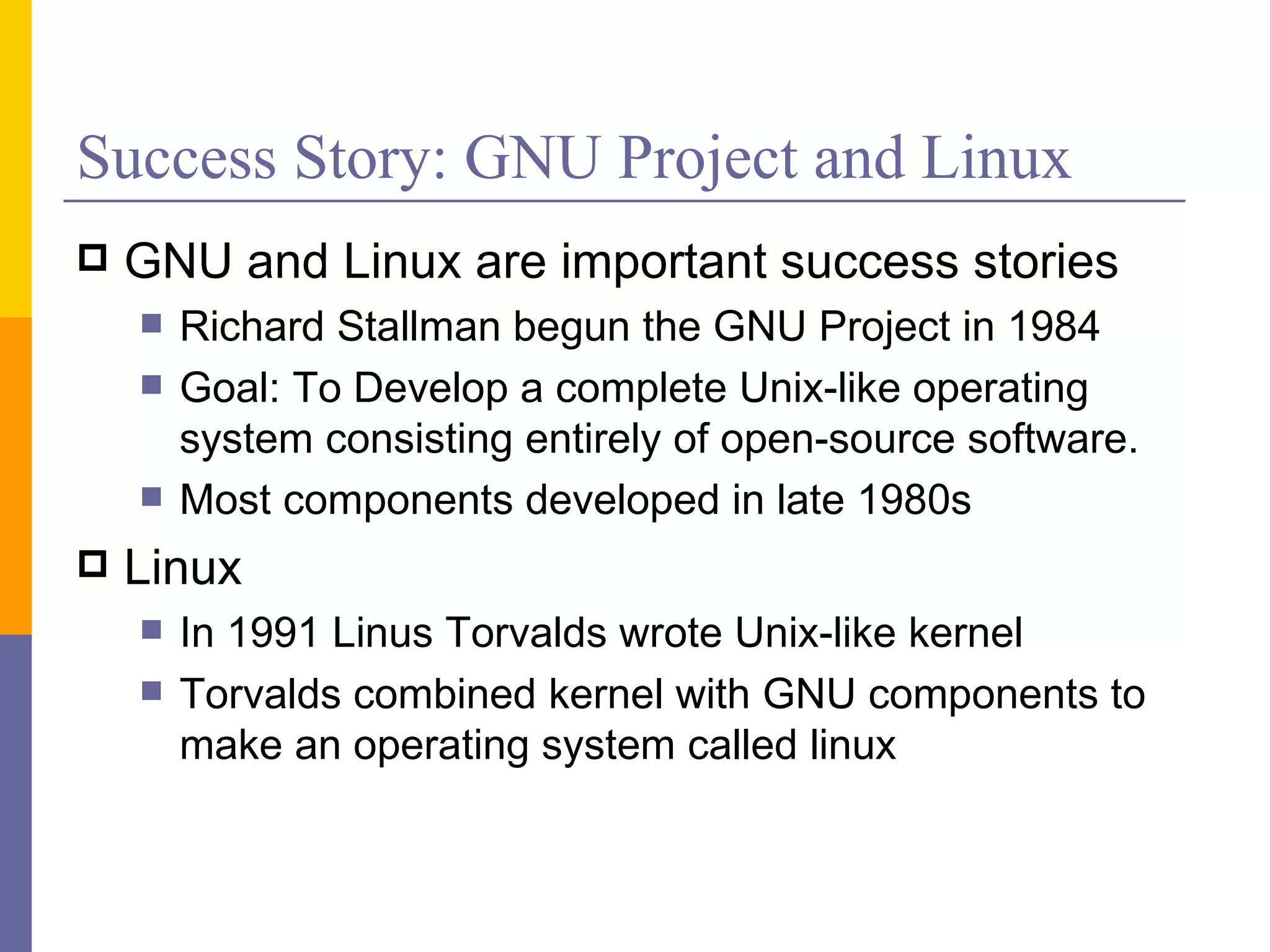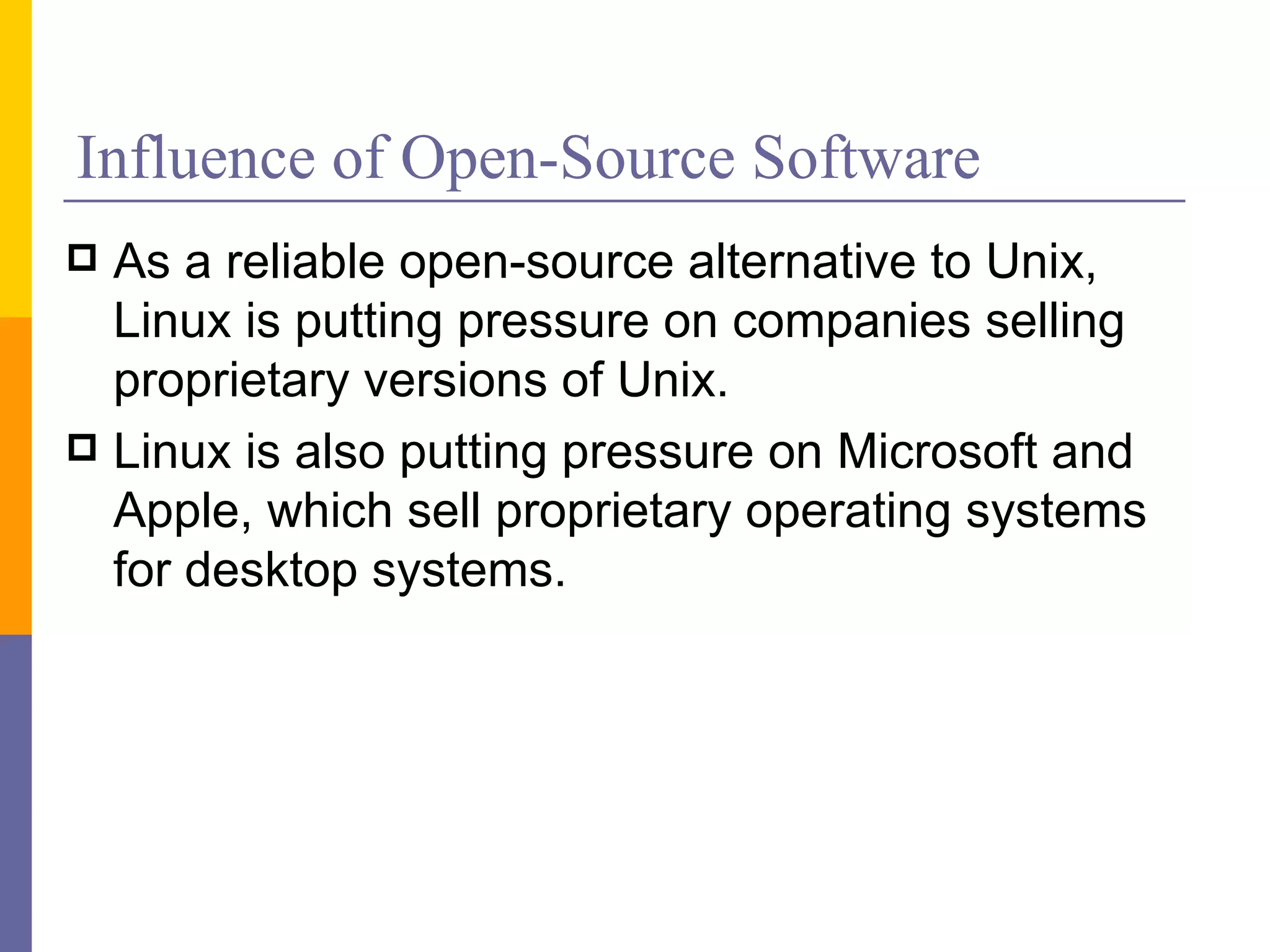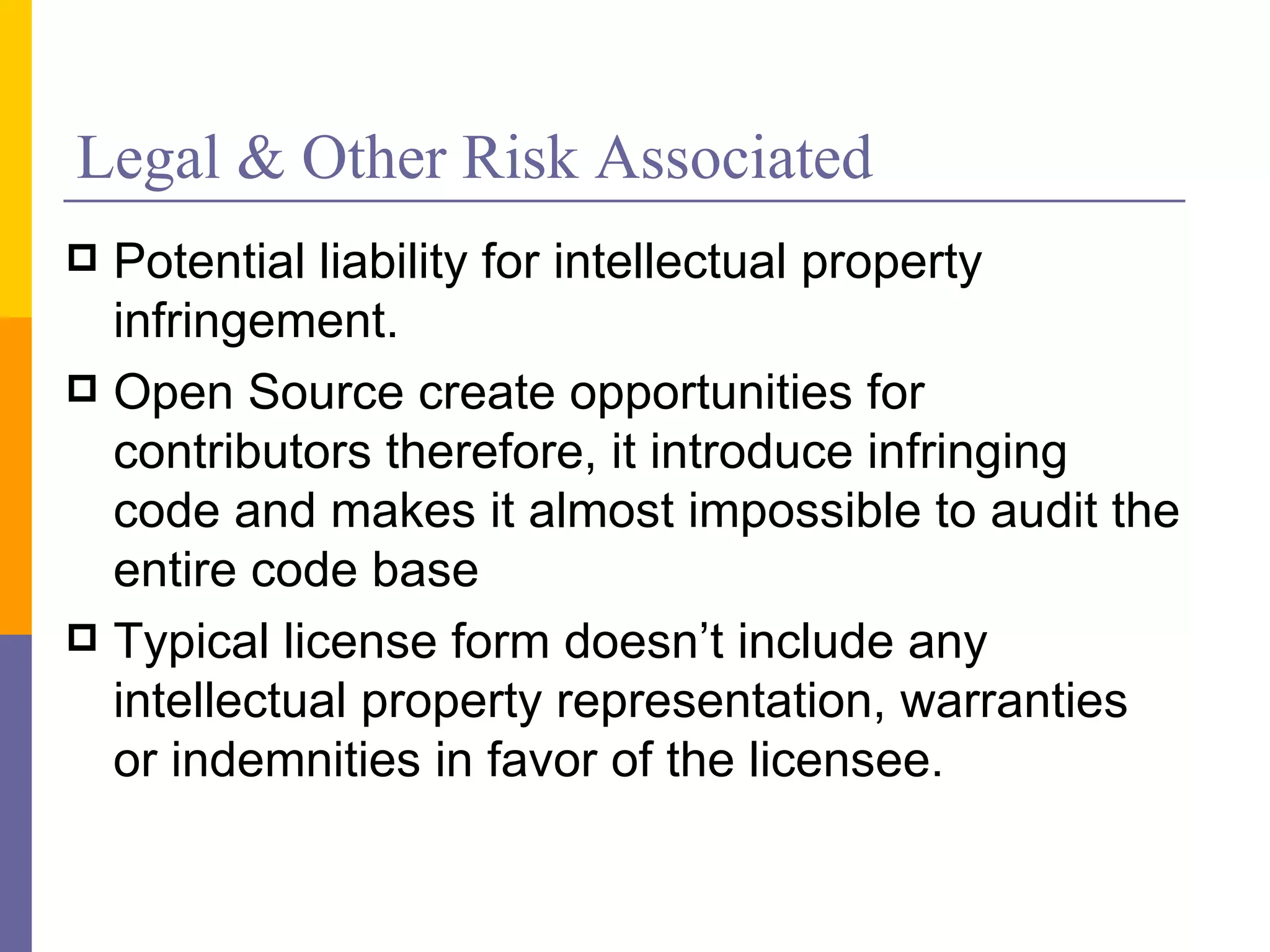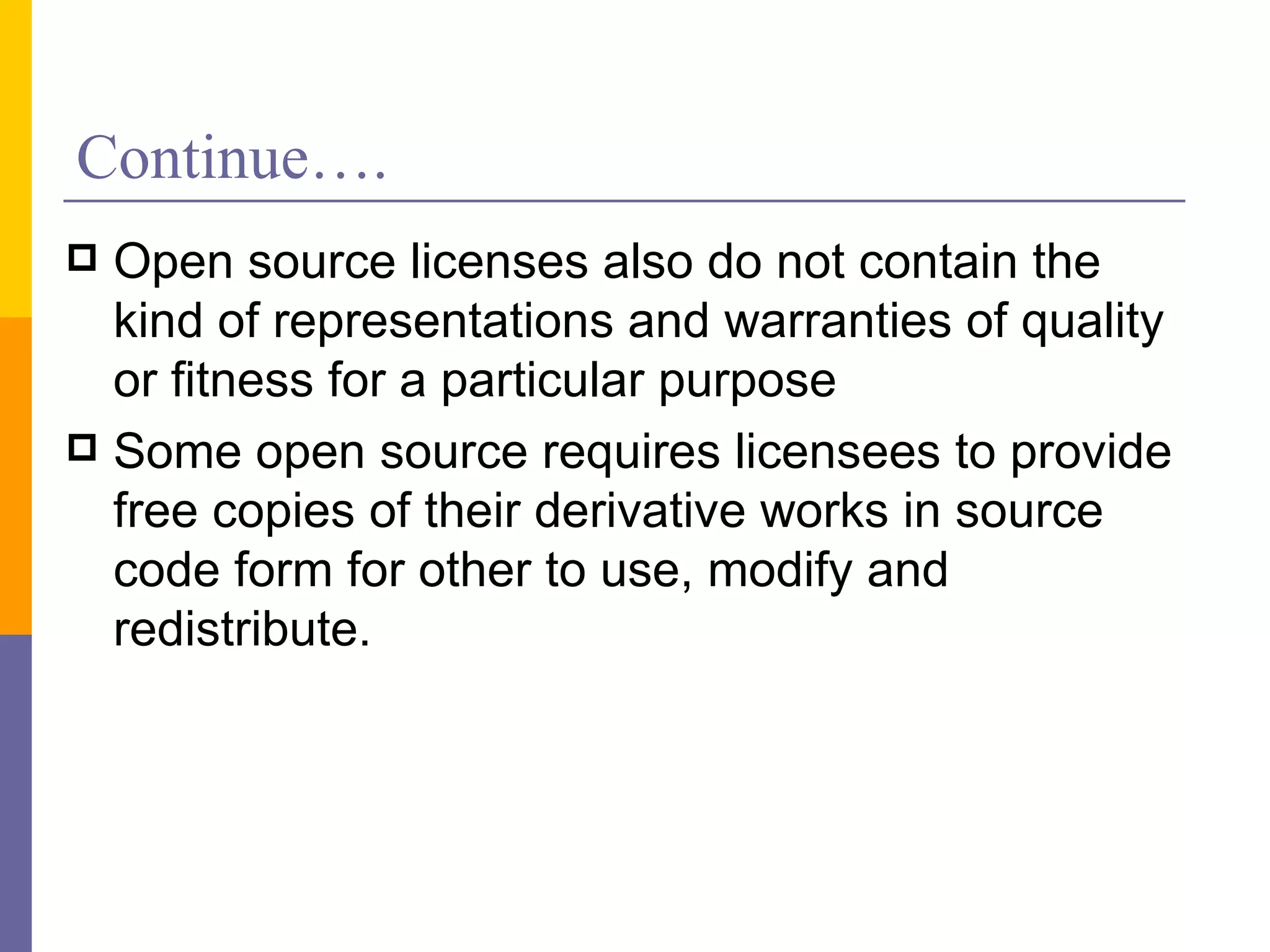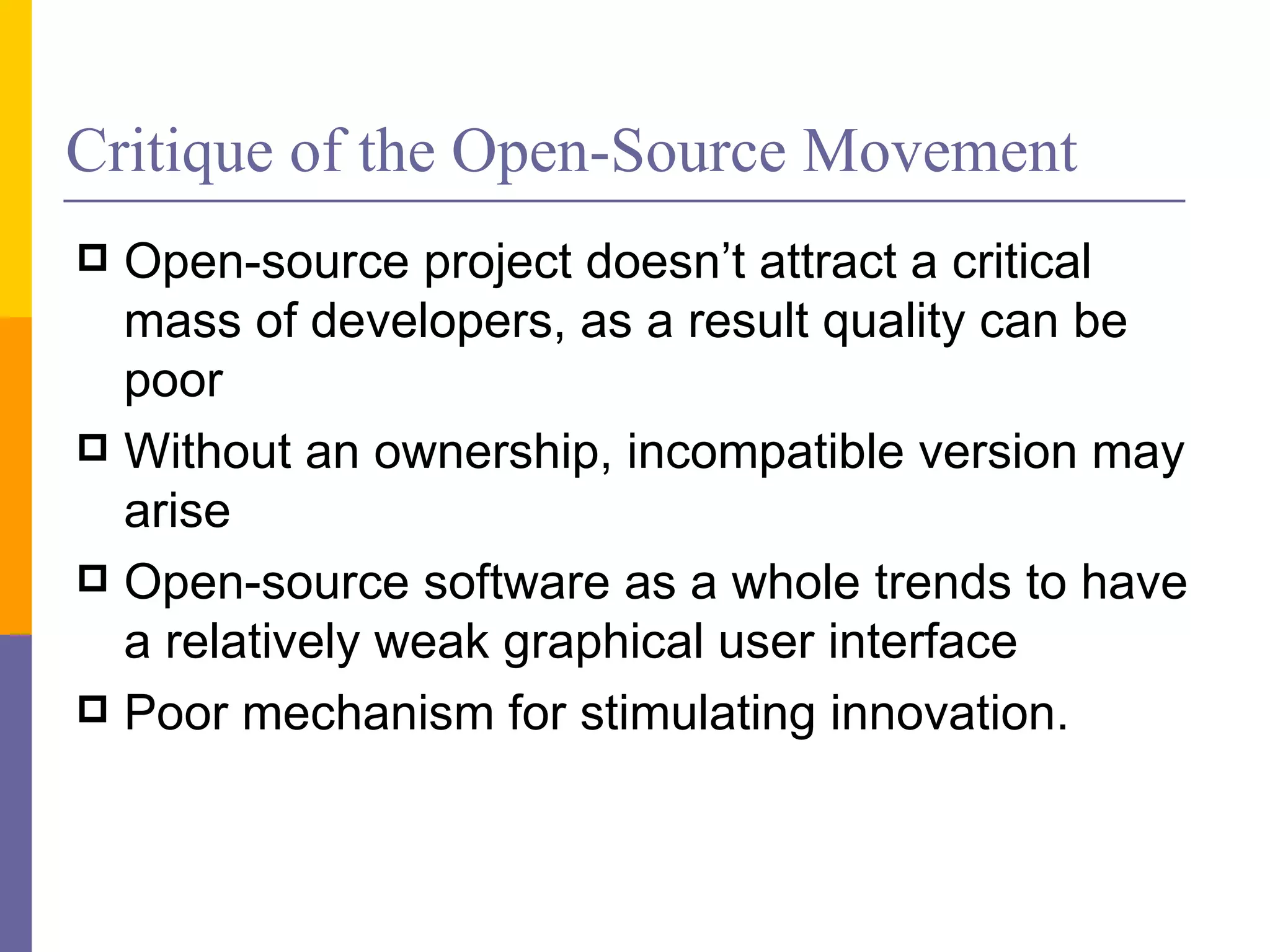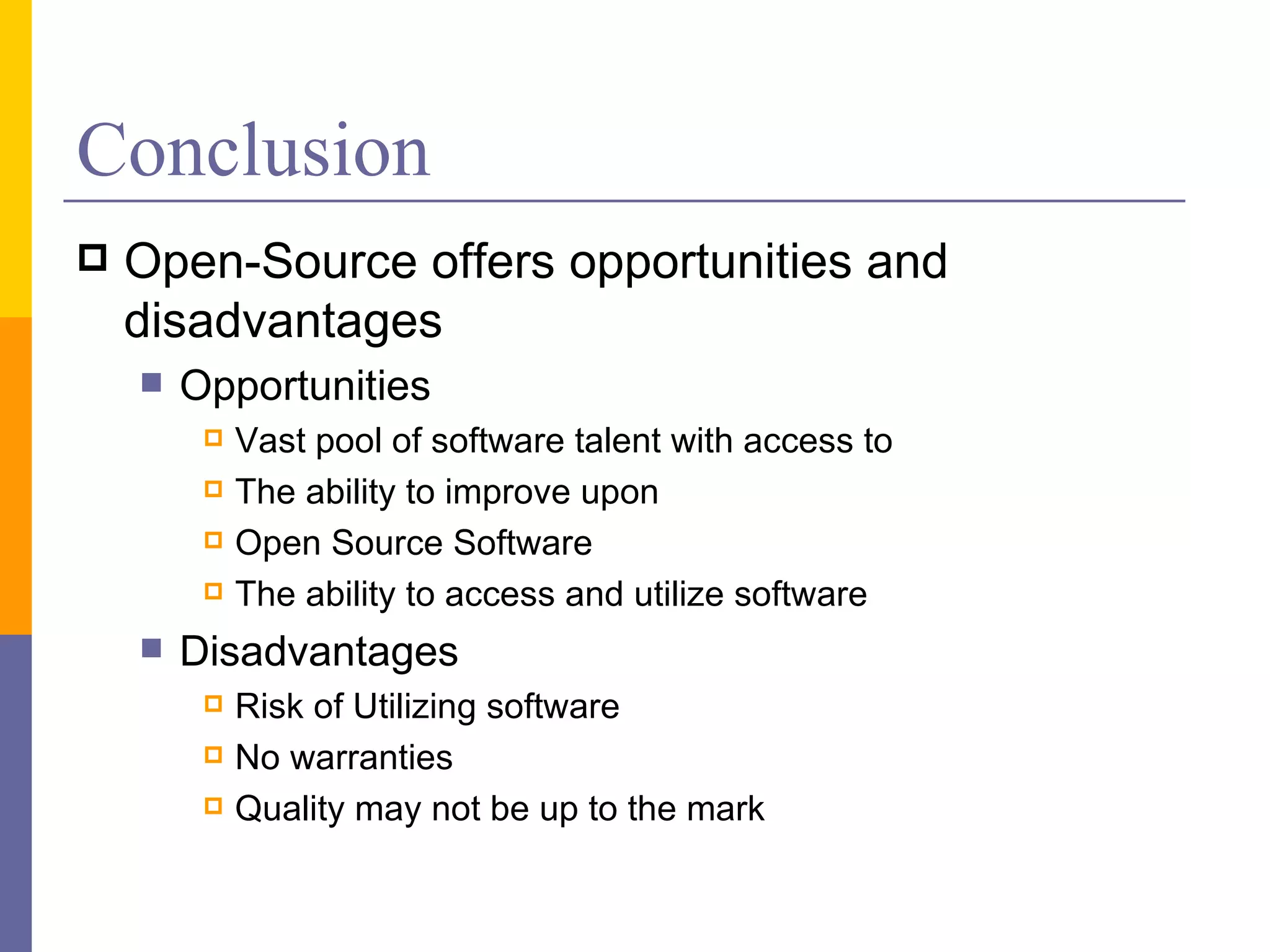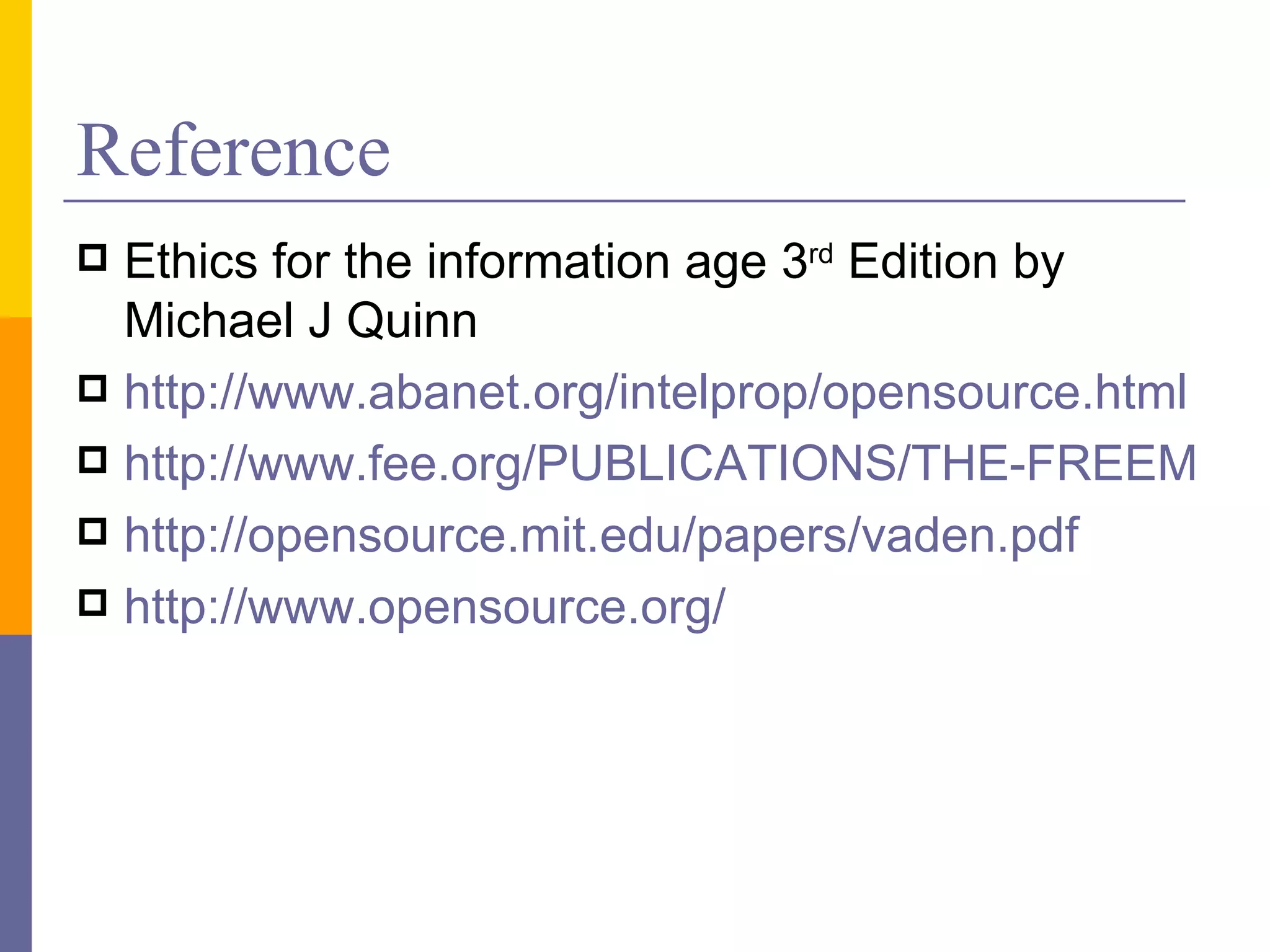This document discusses open source software and its history, benefits, and examples. It describes how the GNU project and Linux combined open source components to create successful operating systems. While open source provides access and opportunities for collaboration, it also poses legal risks and lack of warranties. Critiques include that open source projects may lack developers and have weak graphical interfaces. Overall, the document provides an overview of the open source movement and perspectives on its opportunities and disadvantages.
